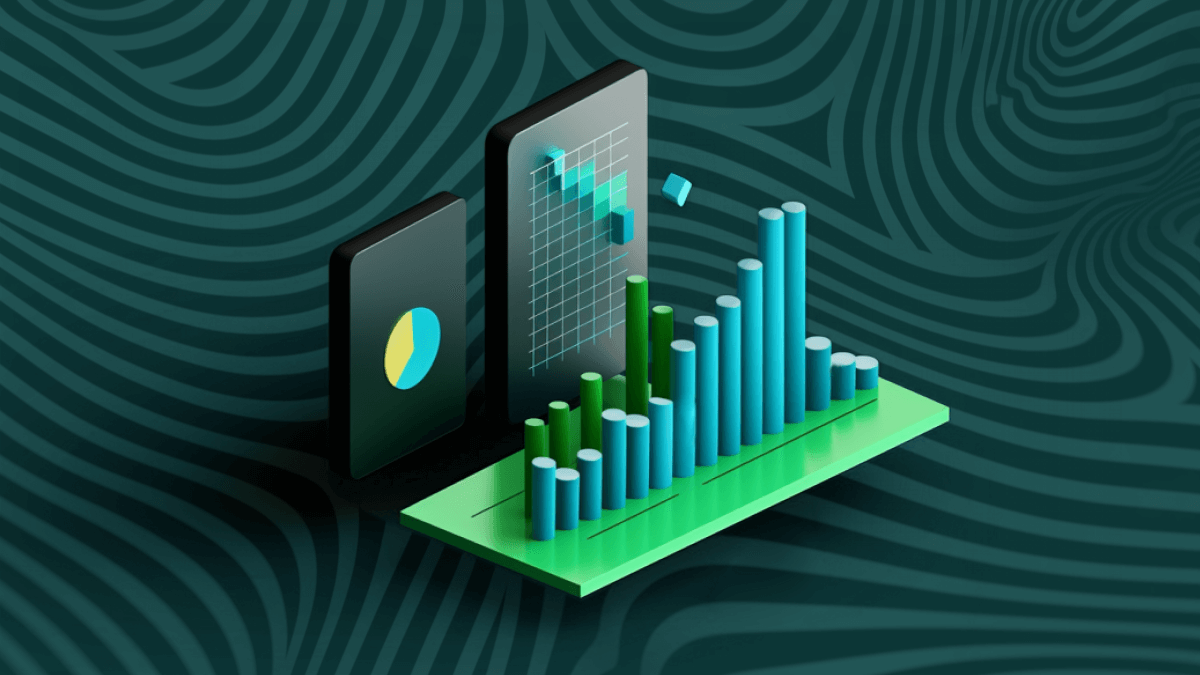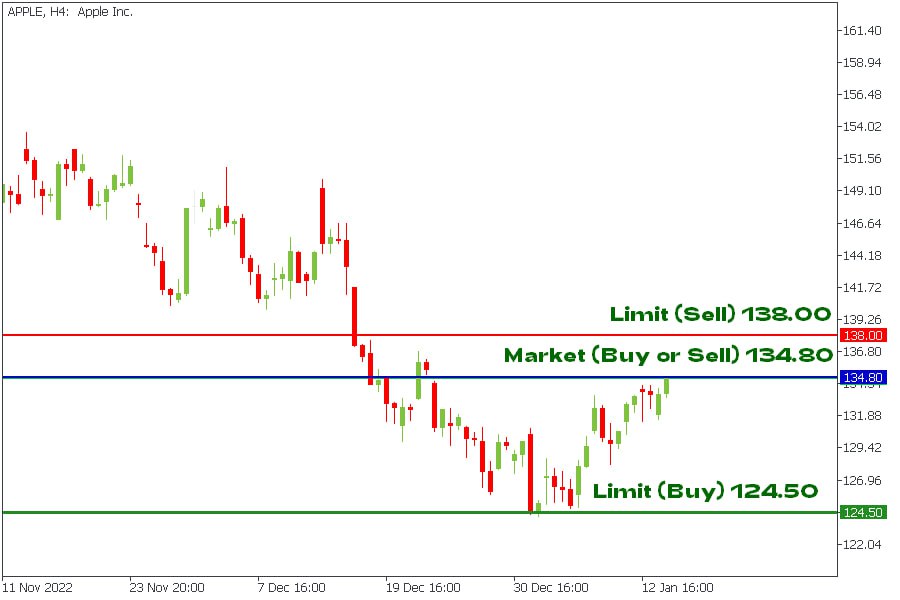Order types: Buy/Sell, Limit, Stop, Stop-Limit

This article will introduce you to the types of orders used in Forex trading. It is a simple guide that will help you find your way with different orders as you explore the market with FBS.
What are the different order types?
Market order
Unless otherwise specified, this is the order type assigned to your order by the broker. A market order is not subject to any restrictions, so you can rest assured that it will be filled.
In Forex, market orders execute 24/5. However, remember that you might get a different initial price than you saw while placing the order. You might also want to consider price-affecting factors like news or other market events: they may come into play if you place your order before or after regular trading hours.
Pending order
A pending order is an order to the broker to open a trade when certain conditions are reached, for example, when the price of an asset approaches a particular value.
There are three types of pending orders: Buy Limit/Sell Limit, Buy Stop/Sell Stop, Buy Stop Limit/Sell Stop Limit, all of which are covered in the following section.
Limit order
As the name suggests, a limit order is a type of order that you use to buy or sell an asset at a limit price - below or above a specified price.
If you're an investor who knows what price you’re after, you go with a limit order. Limit orders help investors manage market risk and buy particular assets at the right price rather than get a quick fill.
With limit orders, you can decide on the price to buy or sell. Buy limit orders are executed at or below the limit price, whereas sell limit orders are executed at or above the limit price. So if your limit order is filled, you're guaranteed to get your limit price or a better price.
Some limit orders include a time limit within which the trade must be executed at (or better than) the specified price. These orders generally have higher execution costs than market orders.
Limit order example:

The chart shows an example of a limit order.
At the last price of approximately $134.80, if the asset falls to $124.50, a Buy Limit order with a limit price of $124.50 (green line) would be placed. If the asset falls to $124.50 or below, the limit order will be triggered and executed at $124.50 or below. If the asset stays above $124.50, there will be no execution.
If you wanted to sell the asset as it rose to $138, you would place a Sell Limit Order with a limit price of $138 (red line). The limit order will be triggered if the stock hits $138 or higher. If not, there will be no execution.
Stop order
Stop orders allow traders to buy or sell assets when the price reaches a specified price (a stop price). A stop order becomes a market order automatically when a stop price is reached. When that happens, the order is executed at the current market price as soon as possible.
Some stop-order scenarios include:
- An asset you own is rising, and you want to protect part of your unrealized gain if the price starts falling.
- You want to set a floor around the amount of loss you will tolerate on a position in a recently purchased stock.
- You believe that if a stock breaks above a certain level, it may signal a continued rise, and you want to be able to buy the stock when it does.
Often you will see a sell stop to be referred to as a stop-loss. That’s because this kind of order can help protect an unrealized gain or minimize a loss. Typically, you will enter a sell-stop order at a stop price below the current market price. If the stock drops to the specified price (or trades below it), the sell-stop order gets triggered and becomes a market order executed at the current market price.
When you buy with a stop order, you place your buy-stop order at a stop price above the current market price, with the idea of stopping the stock from getting away from you as it rises.
Stop order example:
You own a stock worth $100 and want to protect yourself against a decline. You can set a minimum acceptable limit to sell the stock. For example, you could place a sell-stop order at $85. If an execution occurs at $85 or lower, your stop order will be triggered, and a market order will be entered to sell at the next available market price.

Limit order types
Limit orders have two different types depending on the purpose:
- Buy limit is an order to buy an asset at or below a specified price. As with all types of limit orders, you must place buy limit orders on the correct side of the market to accomplish the task of improving the price.
- Sell limit orders are used to sell an asset at or above a specified price. The order must be placed at or above the current market price for best results.
Stop orders types
- Buy stop orders are for buying an asset higher than the current market bid. A buy stop order becomes active only as a specified price level is reached. Once that happens, the order becomes a market or limit order.
- Sell stop is an order to sell an asset at a price below the current market ask. Like a buy stop order, a sell stop order only takes effect when a specified price level is reached.
- Buy stop limit orders are stop orders for placing Buy Limit. When the future ask price hits the stop level, a Buy Limit order is placed at the level, specified in Stop Limit price field. The stop level is set above the current ask price, while the stop limit price is set below the stop level.
- Sell stop limit orders are stop orders for placing Sell Limit. A Sell Limit order is placed at the level specified in Stop Limit Price field when the future bid price reaches the stop level specified in the order. A stop level is set below the current Bid price, while Stop Limit price is set above the stop level.
The bottom line
Mastering different types of orders is one of many factors that can affect your trading. Explore and research the market to gain confidence and become a better trader. See if your broker offers online educational materials. For example, FBS offers free training for traders of different experience levels. You can try training courses with the FBS - Trading Broker app, watch video tutorials on the FBS YouTube channel, or stick with the FBS blog. Choose what suits you best and start learning.
FAQ
What is an order in trading, and how does it work?
An order is a set of traders’ instructions to a broker to buy or sell a particular asset. Depending on the trader’s strategy, several order types affect how much the trader buys or sells assets and when they do.
What is a market order, and how do I use it?
A market order is an instruction to immediately buy/sell an asset at the current market price. With a market order, you're guaranteed that your trade will be filled. However, such an order does not guarantee the execution price, as it will typically be executed at or near the current bid (for a sell order) or ask (for a buy order). Unless you specify otherwise, your broker will mark all your trading orders as market orders.
What is a limit order, and how does it work?
A limit order, sometimes called a pending order, is a type of order you will use to buy or sell an asset at a specific price. To buy an asset, you should use a buy limit order to be filled at or below the limit price. To sell an asset, you should go for a sell limit order set to the limit price or higher.
What are the different order types?
There are three main order types: a market order, a limit order, and a stop order. However, limit and stop orders break down into several subtypes: buy limit, sell limit, sell stop, buy stop, stop limit, and trailing stop loss.
How do you set a Stop Loss order?
A Stop Loss order is a buy/sell order used to limit losses when there is a concern that a price may move against the trade. To set a Stop Loss order, a trader must select the lowest limit price at which they will sell the stock if it reaches that limit on its way down.




